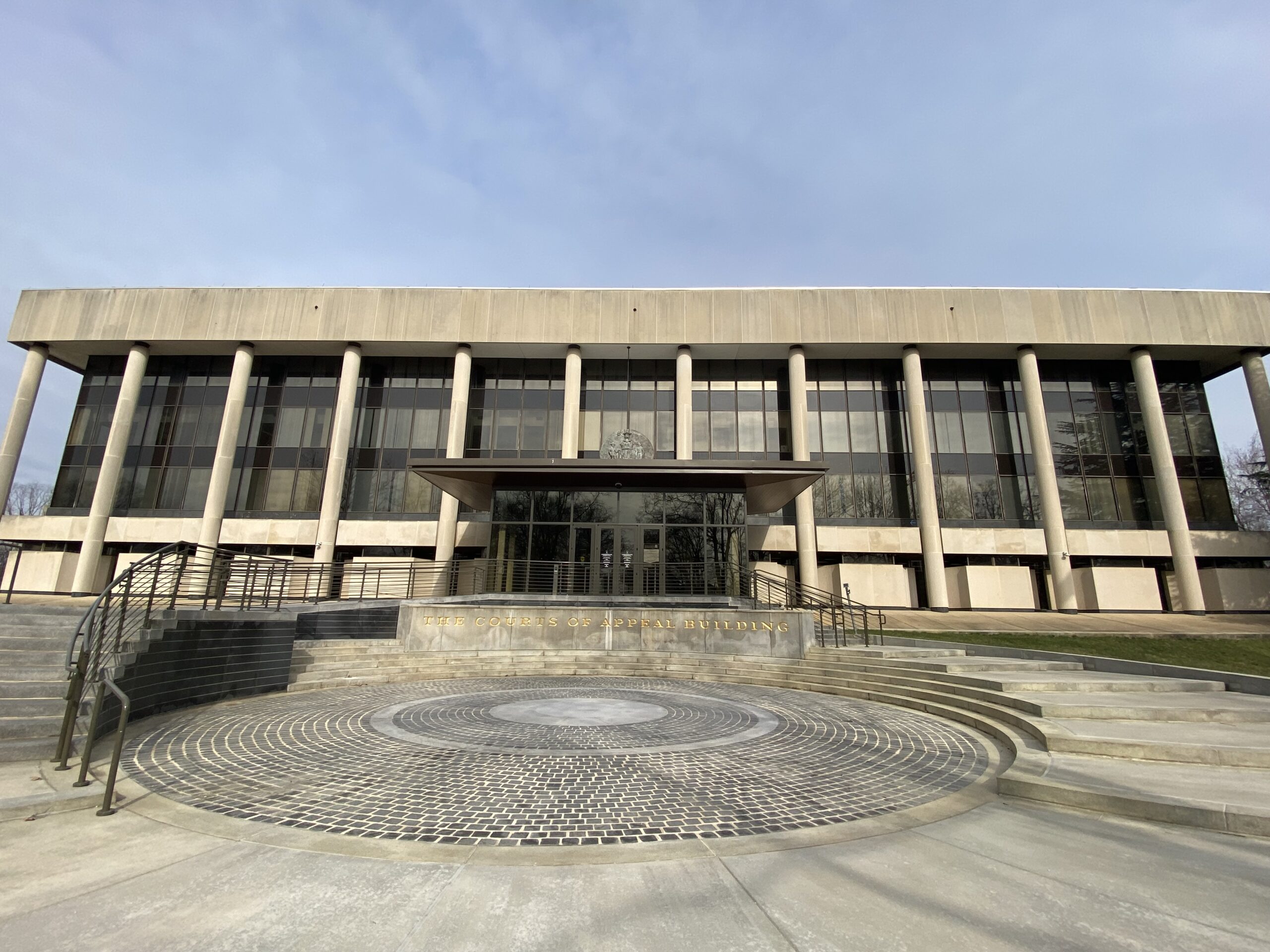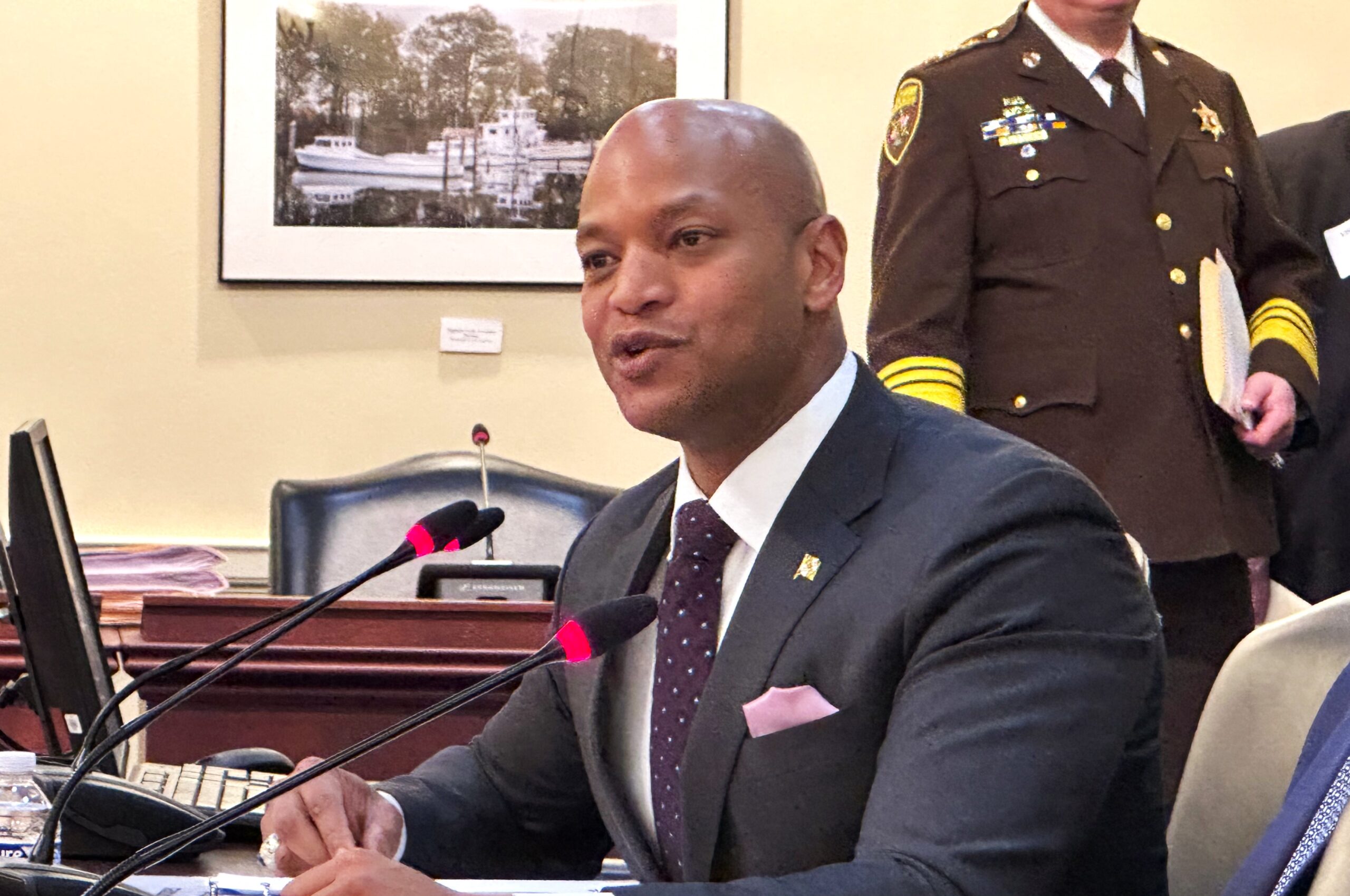Legislative Redistricting Trial Opens With GOP Expert Decrying Lack of Compactness

The Maryland Constitution requires that legislative districts be compact and respect natural and political boundaries. Whether the state’s recently passed legislative redistricting plan complies with those requirements was a key question when a trial to overturn the new map kicked off Wednesday.
All four petitions filed against the map enacted by lawmakers in January argue that some of the new district lines violate Article III, Section 4 of the Maryland Constitution. That provision stipulates that legislative districts “shall consist of adjoining territory, be compact in form, and of substantially equal population” and respect natural and political boundaries.
Strider Dickson, an attorney for three Republican delegates who filed one of the lawsuits, said that Districts 12, 21, 22, 23, 24, 27, 33 and 47 violate that constitutional provision by either being non-compact or not respecting natural or political boundaries.
That petition was brought by Dels. Mark N. Fisher (R-Calvert), Nicholaus R. Kipke (R-Anne Arundel) and Kathy Szeliga (R-Baltimore County). The three lawmakers contend that their own districts and several others violate the state constitutional requirements of compactness and respect for political and natural boundaries.
Sean Trende, a senior elections analyst for the political news outlet RealClearPolitics and a witness on behalf of Fisher, Kipke and Szeliga, said that he compared the challenged districts to every senatorial and state House district drawn across the United States since 2002 and found that District 12 stood out as being non-compact.
That district includes narrow portions of southeastern Howard and northwestern Anne Arundel counties in the new map. In the state’s previous legislative map, District 12 also included a narrow strip of Howard County around Columbia, although it also consisted of a portion of Baltimore County’s southwestern peninsula.
Trende said the vast majority of districts nationwide were more compact than the new District 12 based on various metrics for compactness, like the Reock compactness score, a ratio devised by a Rutgers University professor and state government expert to quantify the compactness of a legislative district.
Kipke argued that District 12 spreading into Anne Arundel County will weaken the power of local representatives by including a senator from Howard County in delegation meetings. Most of District 12’s population is now contained in a two-member delegate subdistrict in Howard County. That district is currently represented by Sen. Clarence K. Lam (D).
Fisher took issue with the way his own single-member subdistrict, 27B, is drawn in the new map because it crosses the Patuxent River to combine portions of central Calvert County with southern Prince George’s County. He said it would take more than a half hour and a trip through a separate senatorial district to get from one county’s portion of the subdistrict to the other by car.
District 27B also crossed the Patuxent River without a bridge in the state’s previous set of maps, although one could commute between the two halves of the district without leaving the larger senatorial district.
Del. Rachel P. Muñoz (R), recently appointed to an Anne Arundel County House seat, also spoke about the changes the new map has brought to county district lines.
Special Magistrate Alan M. Wilner, a former Court of Appeals judge who is presiding over the lawsuits, questioned Trende about whether Maryland’s unusual geography could have an impact on the district boundaries. Trende said the state borders and the Chesapeake Bay generally have a bigger effect on the compactness of congressional districts than legislative districts and don’t impact many of the inland districts that are being challenged.
Robert Scott, the deputy chief of litigation for the Maryland Attorney General, asked Trende whether he had considered the boundaries of counties and how many times the new districts split counties in his analysis; Trende said he hadn’t been asked to.
The Republican delegates’ petition asks that, if the General Assembly doesn’t enact a new legislative redistricting plan that “complies with the Maryland Constitution and Declaration of Rights in a timely fashion,” the plan put forward by the Maryland Citizens Redistricting Commission convened by Gov. Lawrence J. Hogan Jr. (R) be put in place instead.
Scott noted that Trende hadn’t done a similar compactness analysis on the map put forward by the Maryland Citizens Redistricting Commission.
The new legislative districts that are being challenged in court were drawn up by the Legislative Redistricting Advisory Commission, a panel convened by Senate President Bill Ferguson (D-Baltimore City) and House Speaker Adrienne A. Jones (D-Baltimore County). Jones and Ferguson were both members of that commission, along with two other Democratic legislative leaders and two Republican legislative leaders. That panel was chaired by Karl Aro, a former head of the nonpartisan Department of Legislative Services.
The map put forward by the Legislative Redistricting Commission and enacted by lawmakers largely mirrors previous districts. It also shores up several potentially vulnerable Democrats for reelection.
Allan Jay Lichtman, an American University history professor and redistricting expert who testified on behalf of the state, argued that Democrats could have pressed their advantage significantly in redrawing the map but chose not to. Lichtman argued that the map has a nearly identical partisan makeup compared with the map enacted a decade ago.
“This is not what you would expect if the General Assembly … was intent on violating Article III, Section 4 to create a partisan gerrymander,” Lichtman said.
A total of four petitions were filed against the new legislative redistricting map.
Washington County Republican Central Committee President Seth Wilson filed a petition, and argued Wednesday that District 2, which now crosses from Western Maryland into Frederick County, disregards county lines for “no good reason.” Assistant Attorney General Andrea Trento argued that, with Western Maryland counties losing population, an eastward shift in Districts 1 and 2 was necessary.
Petitioner David Whitney, an Anne Arundel County resident, took issue with the way the Broadneck Peninsula was divided among multiple districts in the new map, particularly with District 30A including parts of the area with Edgewater and crossing both the Severn and South rivers. Trento noted that the district similarly crossed the two rivers in previous maps, and said such crossings are at times necessary to account for population shifts.
And another petition, brought by Dels. Brenda J. Thiam (R-Washington) and Wayne A. Hartman (R-Wicomico), as well as Republican voter and Hampstead resident Patricia Shoemaker, argues that the plan violates the state constitution, as well as the U.S. Constitution, because it includes both single- and multi-member districts. That petition has yet to be argued.
The case is set to continue Thursday morning.




 Creative Commons Attribution
Creative Commons Attribution